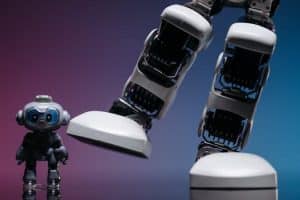Living Circuits: Biology Meets Electronics
Imagine a world where living beings could interact with electronic devices, where biology and technology seamlessly blend together. This may sound like something out of a sci-fi movie, but it is actually becoming a reality. With the advancement of technology, a field known as “living circuits” has emerged, bridging the gap between biology and electronics. In this article, we will explore the fascinating world of living circuits and how it is revolutionizing the way we think about and interact with technology.
What are Living Circuits?
Living circuits, also known as biological circuits or bioelectronic circuits, are systems that use living cells or organisms to perform electronic functions. These circuits are composed of biological components, such as cells, tissues, or proteins, as well as electronic components, such as transistors and wires. By integrating living cells with electronic components, living circuits can sense, process, and respond to different signals or stimuli, similar to how electronic circuits function.
How do Living Circuits Work?
The key to understanding living circuits lies in understanding how living cells communicate and process information. Just like electronic circuits use electrical signals to send and receive information, living cells use chemical and electrical signals to communicate with each other. These signals are produced by receptors and other signaling molecules present on the surface of cells. By harnessing these signaling pathways, living circuits can process information and trigger specific responses within the cells.
For example, a living circuit may be designed to sense the presence of a particular molecule and trigger a specific response, such as the production of a certain protein or the release of a chemical. This response can then be detected by electronic components integrated within the circuit, allowing for real-time monitoring and control.
Potential Applications of Living Circuits
Living circuits have the potential to impact a wide range of fields, including medicine, environmental monitoring, and biotechnology. One of the most promising applications of living circuits is in the field of biosensors. These sensors use living cells to detect and measure the presence of specific substances, such as chemicals, toxins, or pathogens, in the environment. By coupling living cells with electronic components, biosensors can provide rapid, sensitive, and accurate detection of substances that are difficult to detect with traditional methods.
In medicine, living circuits show great potential in the development of advanced drug delivery systems. By using living cells as carriers of drugs, these circuits can deliver the medication to specific locations within the body, providing targeted and more efficient treatment. Additionally, living circuits can also be utilized for tissue engineering, where living cells are used to create functional tissues or even organs.
Another exciting application of living circuits is in the field of renewable energy. By harnessing the metabolic processes of living cells, these circuits can convert various forms of energy, such as light or chemical energy, into electrical energy. This technology has the potential to revolutionize the way we generate and store energy, making it more sustainable and environmentally friendly.
The Future of Living Circuits
The possibilities of living circuits are endless, and as technology continues to advance, so does the potential for new and innovative applications. However, there are still many challenges to be overcome, such as ensuring the stability and longevity of living cells in electronic devices, and the development of reliable and efficient methods for integrating living cells with electronic components.
Despite these challenges, living circuits have already shown great promise and are paving the way for a new era of bioelectronic technology. With its potential to merge biology and electronics, living circuits have the power to transform many aspects of our lives, from healthcare to energy production. It is an exciting time to be at the forefront of this rapidly evolving field, and the future of living circuits is certainly filled with endless possibilities.
Conclusion
Living circuits represent a groundbreaking intersection between biology and electronics, showing great potential in various fields. By harnessing the signals and processes of living cells, these circuits have the ability to sense, process, and respond to different stimuli, offering a new level of intricacy in biotechnology. As research in this field continues to expand, we can look forward to even more incredible applications and advancements in the future.









